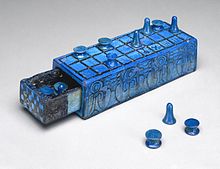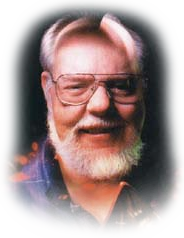The Games Portal

A game is a structured type of play, usually undertaken for entertainment or fun, and sometimes used as an educational tool. Many games are also considered to be work (such as professional players of spectator sports or games) or art (such as jigsaw puzzles or games involving an artistic layout such as Mahjong, solitaire, or some video games).
Games are sometimes played purely for enjoyment, sometimes for achievement or reward as well. They can be played alone, in teams, or online; by amateurs or by professionals. The players may have an audience of non-players, such as when people are entertained by watching a chess championship. On the other hand, players in a game may constitute their own audience as they take their turn to play. Often, part of the entertainment for children playing a game is deciding who is part of their audience and who is a player. A toy and a game are not the same. Toys generally allow for unrestricted play whereas games present rules for the player to follow.
Key components of games are goals, rules, challenge, and interaction. Games generally involve mental or physical stimulation, and often both. Many games help develop practical skills, serve as a form of exercise, or otherwise perform an educational, simulational, or psychological role. (Full article...)
Selected article -

David Lance Arneson (/ˈɑːrnɪsən/; October 1, 1947 – April 7, 2009) was an American game designer best known for co-developing the first published role-playing game (RPG), Dungeons & Dragons, with Gary Gygax, in the early 1970s. Arneson's early work was fundamental to the role-playing game (RPG) genre, pioneering devices now considered to be archetypical, such as cooperative play to develop a storyline instead of individual competitive play to "win" and adventuring in dungeon, town, and wilderness settings as presented by a neutral judge who doubles as the voice and consciousness of all characters aside from the player characters.
Arneson discovered wargaming as a teenager in the 1960s, and he began combining these games with the concept of role-playing. He was a University of Minnesota student when he met Gygax at the Gen Con gaming convention in the late 1960s. In 1971, Arneson created the game and fictional world that became Blackmoor, writing his own rules and basing the setting on medieval fantasy elements. Arneson took the game to Gygax as the representative for game publisher Guidon Games, and the pair co-developed a set of rules that became Dungeons & Dragons (D&D). Gygax subsequently founded TSR, Inc. to publish the game in 1974. (Full article...)Did you know? -
- ...that the virtual economy of massively multiplayer online games sometimes attracts virtual crime, which is punishable by real laws in some countries?
- ...that since 1998 All Nippon Airways has operated Pokémon Jets (pictured)?
- ...that the World Chess Hall of Fame originally used cardboard plaques to honor past grandmasters, and was located in the basement of a New Windsor, New York, building?
- ...that the Japanese role-playing game Night Wizard! was adapted into an animated television series consisting of thirteen episodes?
- ...that a 2009 Pennsylvania court case ruled that poker is a game of skill, thus not subject to the state laws related to gambling?
General images
Subcategories
Related portals
WikiProjects
Things to do
Selected picture

A screenshot from the Xbox Live Arcade game The Splatters showing a level in play
Associated Wikimedia
The following Wikimedia Foundation sister projects provide more on this subject:
-
 Commons
Commons
Free media repository -
 Wikibooks
Wikibooks
Free textbooks and manuals -
 Wikidata
Wikidata
Free knowledge base -
 Wikinews
Wikinews
Free-content news -
 Wikiquote
Wikiquote
Collection of quotations -
 Wikisource
Wikisource
Free-content library -
 Wikiversity
Wikiversity
Free learning tools -
 Wiktionary
Wiktionary
Dictionary and thesaurus










































